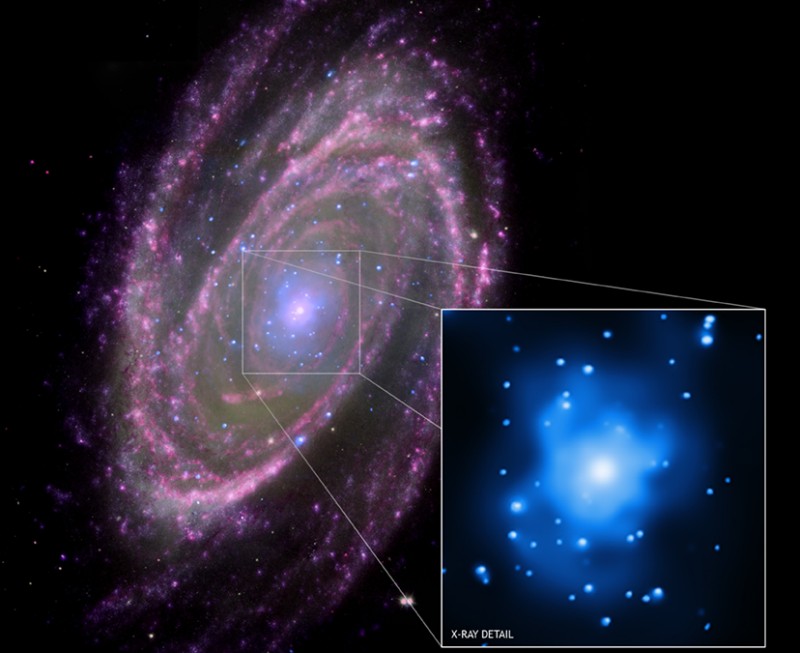 |
Астронет: Астрономическая картинка дня M81: подпитка черной дыры http://variable-stars.ru/db/msg/1228552/eng |
Credit & Copyright: X-ray: NASA/CXC/Wisconsin/D.Pooley & CfA/A.Zezas;
Optical: NASA/ESA/CfA/A.Zezas; UV: NASA/JPL-Caltech/CfA/J.Huchra et al.; IR: NASA/JPL-Caltech/CfA
Explanation:
This impressive
color composite
shows spiral galaxy M81 across the
electromagnetic spectrum.
It combines X-ray data (blue) from the
Chandra
Observatory,
infrared data (pink) from the
Spitzer Space Telescope, and
an ultraviolet image (purple) from the
GALEX satellite,
with a visible light (green)
Hubble image.
The inset highlights X-rays from some of M81's black holes,
including
black
holes in binary star systems with about
10 times the mass of the sun, as well as the central,
supermassive black hole of over 70 million
solar masses.
Comparing computer models of the giant black hole's energy
output to the
multiwavelength data
suggests that feeding that
monster
is relatively simple -- energy and radiation is generated
as material in the central region swirls inwards forming an
accretion disk.
In fact, the process otherwise appears to be just like the
accretion process feeding M81's stellar mass black holes,
even though the central black hole is millions of times more massive.
M81 itself is about
70,000 light-years across and only 12 million
light-years away in the northern constellation
Ursa Major.
Optical: NASA/ESA/CfA/A.Zezas; UV: NASA/JPL-Caltech/CfA/J.Huchra et al.; IR: NASA/JPL-Caltech/CfA
Authors & editors:
Robert Nemiroff
(MTU) &
Jerry Bonnell
(USRA)
NASA Web Site Statements, Warnings,
and Disclaimers
NASA Official: Jay Norris.
Specific
rights apply.
A service of:
LHEA at
NASA /
GSFC
& Michigan Tech. U.
